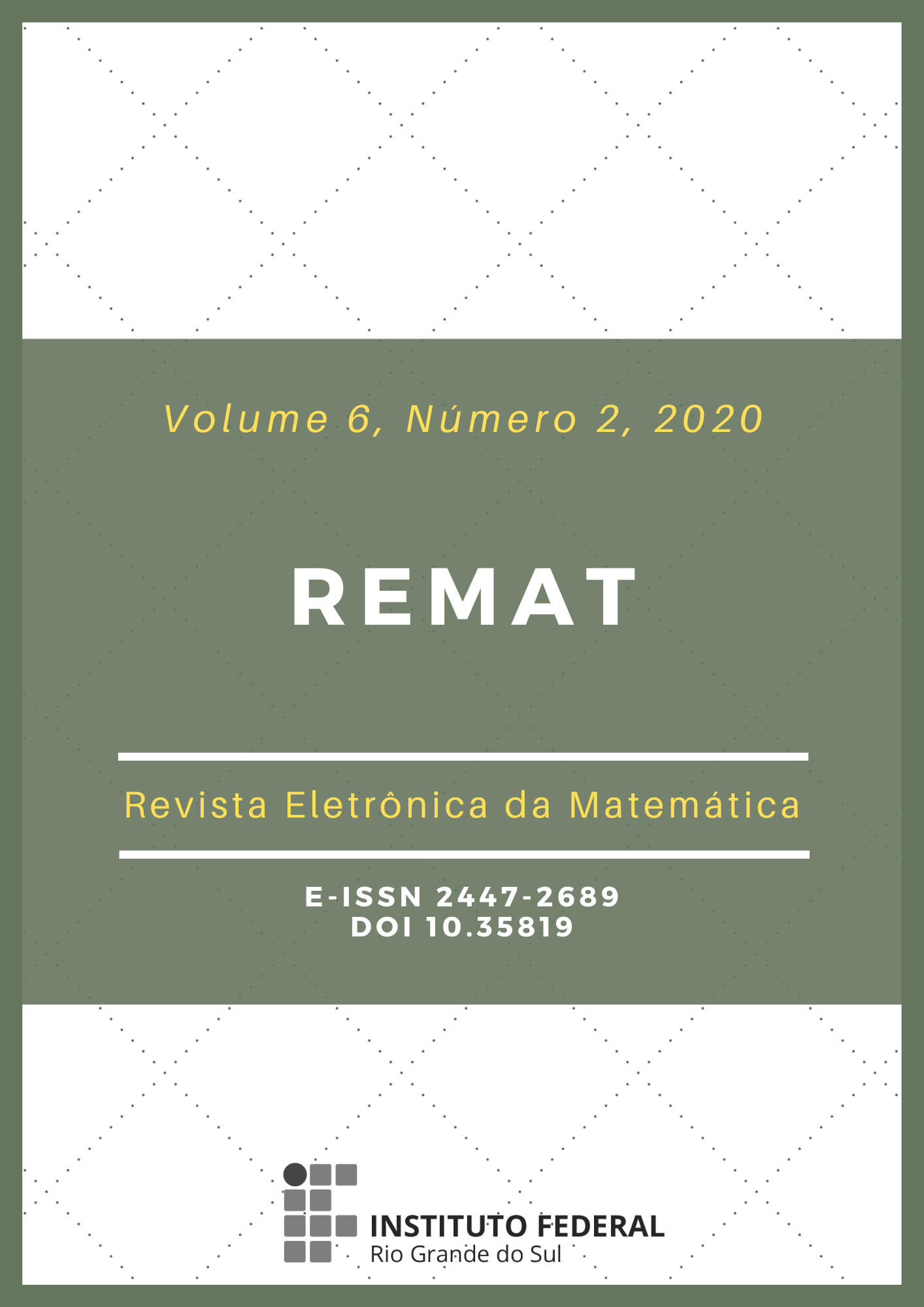The conservative scalar equation: traffic flow applications
DOI:
https://doi.org/10.35819/remat2020v6i2id4162Keywords:
Traffic Flow, Regularization of Initial Data, Weak SolutionAbstract
In this work, the conservative scalar equation was used to represent a vehicular traffic flow model with the signal opening after the green light on a highway with two different speed fields as a function of car density. Two methodologies were presented, one of them is derived from an algebraic equation and the other, called initial regularization data, consists of taking the limit of the continuous approximations of the initial conditions uE(x,0) to obtain the problem solution, what constitutes the originality of this article. The simulation performed with the adopted models in this study, showed that the flow of vehicles during the open signal is more intense with the quadratic model.
Downloads
References
CUMINATO, J. A.; MENEGUETTE JUNIOR, M. Discretização de equações diferenciais parciais: técnicas de diferenças finitas. Rio de Janeiro: SBM, 2013.
FOX, R.W.; PRITCHARD, P. J.; MCDONALD, A. T. Introdução à mecânica dos fluidos. Trad. e revisão técnica: KOURY, Ricardo Koury; MACHADO, Luiz. 7. ed. Rio de Janeiro: LTC, 2015.
GÓMES HERNÁNDEZ, E. Desarrollo de un Modelo de Simulación Vehicular para la Mejora en la Sincronización de Semáforos. 2009. 127 f. Dissertação (Mestrado em Ciências da Computação) ? Instituto Nacional de Astrofísica, Óptica y Electrónica, Tonantzintla, Puebla, México, 2009.
GUIDORIZZI, H. L. Um curso de cálculo. v. 3, 6. ed. Rio de Janeiro: LTC, 2019.
HABERMAN, R. Mathematical models: Mechanical vibrations, population dynamics and traffic flow. Philadelphia: SIAM, 1977.
LEVEQUE, R. J. Numerical methods for conservation laws. Lectures in Mathematics ETH Zurich. 2. ed. Basel: Birkhäuser, 1992.
WILLIAMSON, R. E.; CROWELL, R. H.; TROTTER, H. F. Cálculo de funções vetoriais. v. 2. Rio de Janeiro: LTC, 1979.
Downloads
Published
Issue
Section
License
Copyright (c) 2020 REMAT: Revista Eletrônica da Matemática

This work is licensed under a Creative Commons Attribution 4.0 International License.
REMAT retains the copyright of published articles, having the right to first publication of the work, mention of first publication in the journal in other published media and distribution of parts or of the work as a whole in order to promote the magazine.
This is an open access journal, which means that all content is available free of charge, at no cost to the user or his institution. Users are permitted to read, download, copy, distribute, print, search or link the full texts of the articles, or use them for any other legal purpose, without requesting prior permission from the magazine or the author. This statement is in accordance with the BOAI definition of open access.













 https://orcid.org/0000-0002-0893-7426
https://orcid.org/0000-0002-0893-7426


















